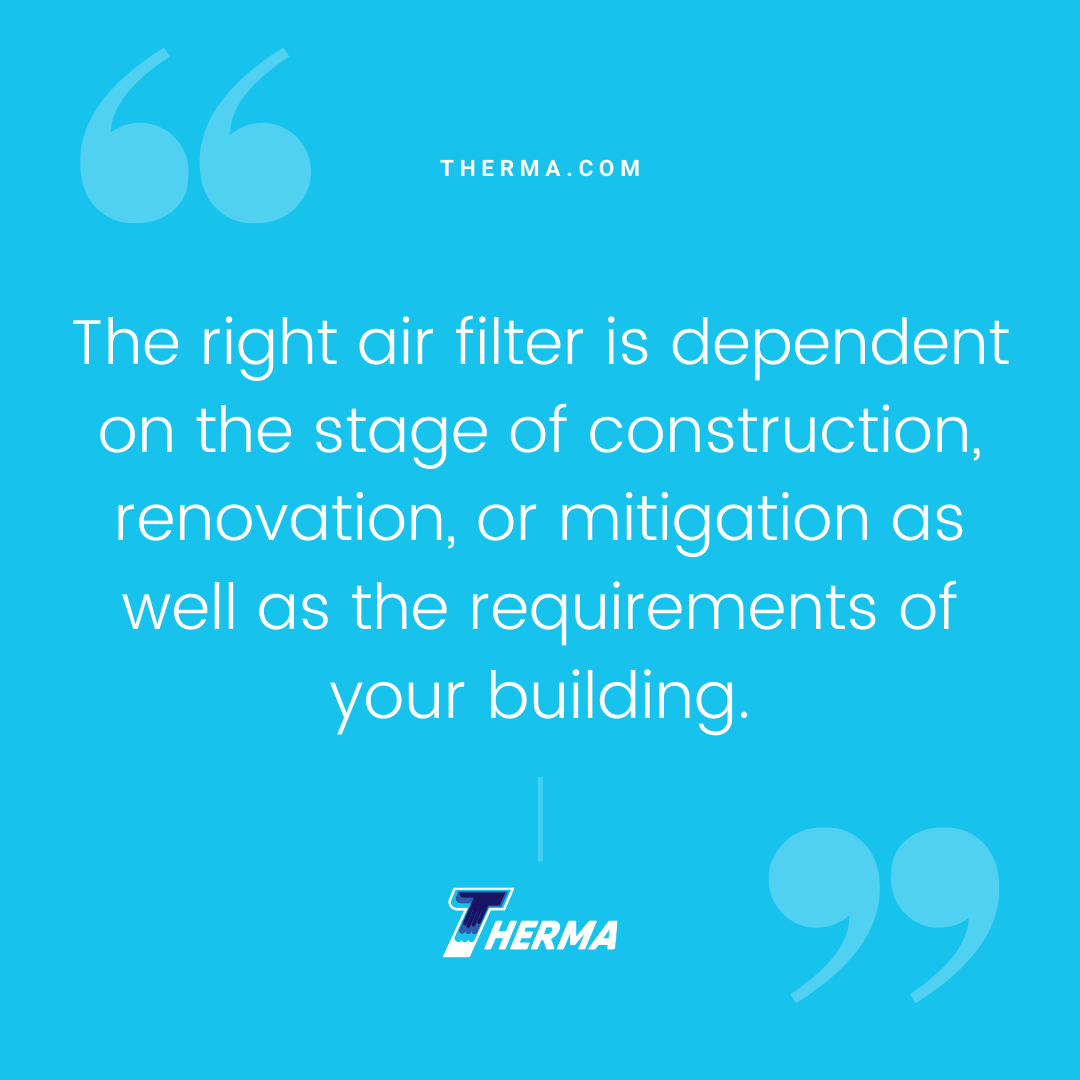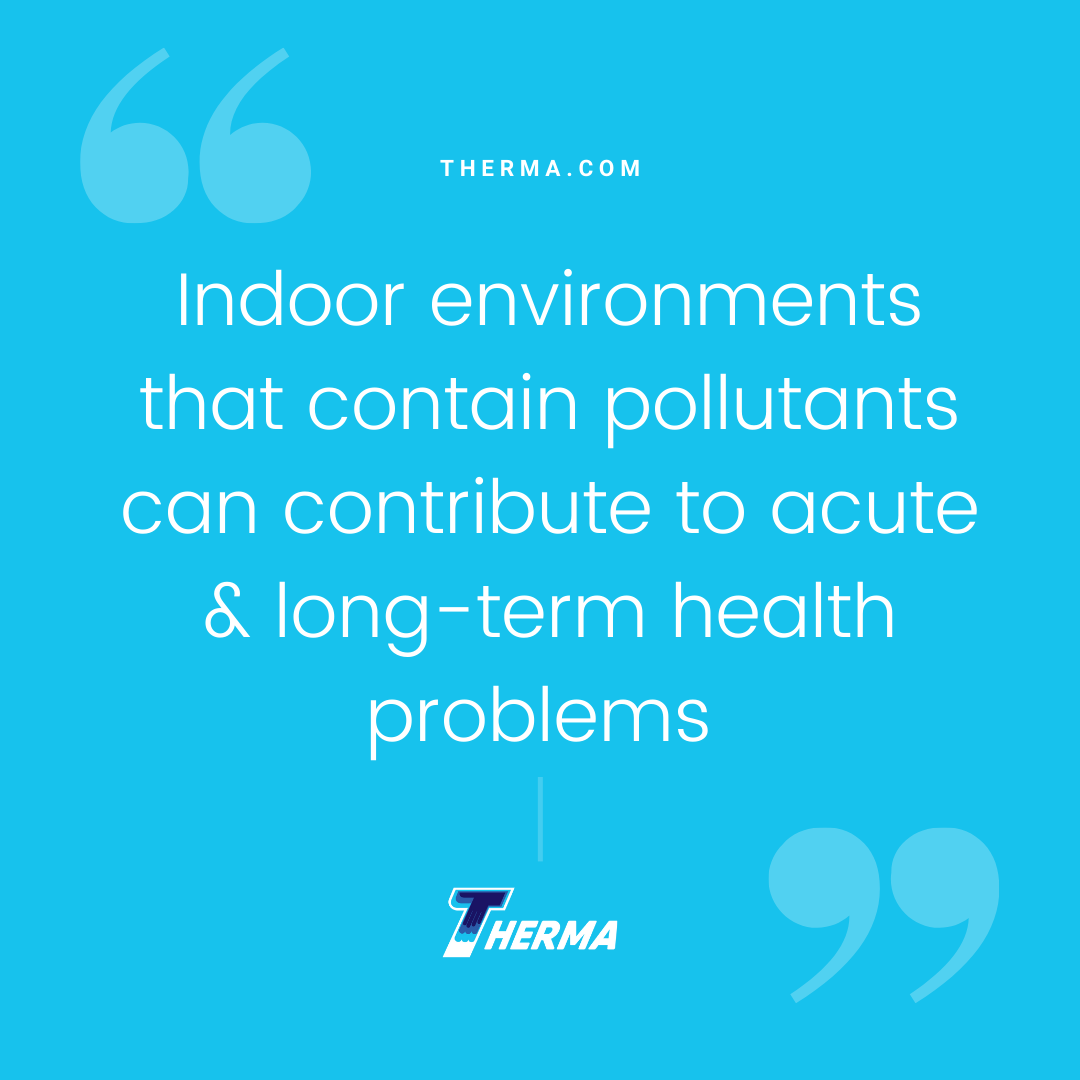by Ali Kriscenski
There are many types of air purification systems available to homeowners and commercial facilities, and understanding the effectiveness of each may seem overwhelming. Fortunately there is a measure that helps quantify how air purification filters perform. The Environmental Protection Agency (EPA) established minimum efficiency reporting values, or MERVs, that rate a filter’s ability to capture particles between 0.3 and 10 microns. This value can help you determine the right type of filter for your building.
Why Air Purification Matters
Indoor environments that contain pollutants can contribute to acute and long-term health problems including:
- Irritation of eyes, nose and throat
- Headaches, dizziness and fatigue
- Respiratory diseases, heart disease and cancer

In some instances, indoor air quality (IAQ) can trigger asthma when occupants are exposed to pollutants such as dust mites, mold, tobacco smoke, or pet dander. Other pollutants, like radon, carbon monoxide or Legionella can have lethal side effects, including pneumonia and lung cancer.
How MERV Ratings Help Building Health
MERV ratings range from 1-16 which correspond to the particle size of contaminants that can pass through a filter. The rating scale was developed by the American Society of Heating, Refrigerating, and Air-Conditioning Engineers (ASHRAE). Filtration of air movement helps provide healthier indoor air quality.
MERV testing on air filters includes particles of pollen, dust mites, flooring fiber, mold and tobacco smoke, among others. A filter rating of 7–12 is typically appropriate for pollutants found in homes while a MERV rating of 13–16 is more suitable to healthcare facilities.
The different filter applications are not necessarily a reflection of higher efficiency. Instead, considerations of air flow and types of contaminants should determine the MERV rating that best fits your building. Different pollutants are mitigated by air filters with varying MERV ratings. For example, pet dander can be controlled with a filter rating of 7–10.

Higher vs. Better: Understanding Ratings and Pollutant Control
While higher-rated filters are used in hospitals, it doesn’t necessarily mean that lower- rated filters can’t be effective in certain settings. MERV rated filters of 1–4 can be utilized in residential furnaces and window air conditioning units to filter out pollutants, such as pollen. Filters with a MERV rating of 5–8 can be useful in industrial or commercial settings to filter out cement or sanding dust. Understanding the different filter ratings and applications will help determine which system and filter will work best for your building program requirements.
So, what do filters rated 13–16 help control? Hospitals use filters rated at MERV 13–16 to filter out the following, among other pollutants:
- Dust mites
- Mold spores
- Pollen
- Legionella
- Copier toner
- Bacteria
Choosing the Right MERV Rated Filters
The right air filter is dependent on the stage of construction, renovation, or mitigation as well as the requirements of your building. Air filters can also be used in combination within a building’s HVAC system to trap construction debris and remove smaller particles. Use MERV ratings to determine the best air purification system to promote building health at your facility.
Need more help? Let our experts help you navigate the options that best fit your project.
Ali Kriscenski was trained in high-performance building design at Boston Architectural College. She has worked with leading architecture and construction firms in NYC and New England and served on the executive team at Forest Stewardship Council International. She was Managing Editor at Inhabitat and has worked pro bono for the Green Building Institute, ISEAL Alliance and Habitat for Humanity.







